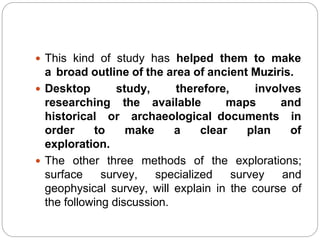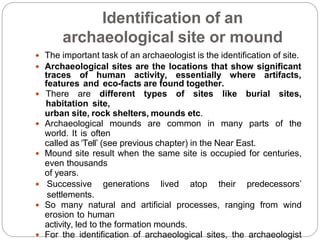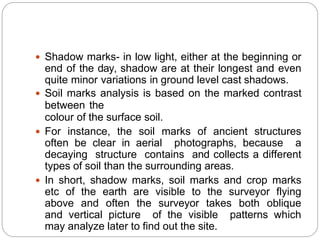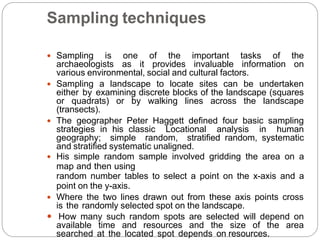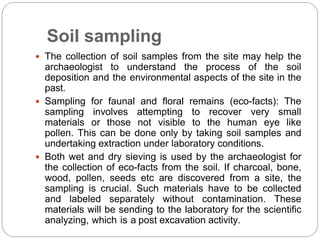The document discusses various methods used in archaeological exploration, including desktop study, surface survey, aerial photography, sampling techniques, and use of instruments. Desktop study involves reviewing existing records and literature about a site. Surface survey uses field walking and collection of surface artifacts to identify areas for further investigation. Aerial photography provides an overhead view of sites through identification of crop marks, soil marks, and shadows. Sampling techniques like simple random sampling and stratified systematic sampling help cover broad areas. Trial pits and soil sampling also aid in understanding a site's potential and paleoenvironmental context. A variety of tools from measurement tapes to ground penetrating radar are used in exploration and documentation.



